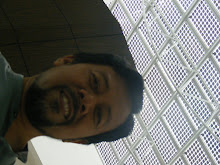CLASS: 2.00PM EVERY TUESDAY @ LECTURE ROOM 3
(any problem please call me) 0134352539; B11 Room 431.
SYNOPSIS:
The course gives emphasis on human comfort and energy saving concept and criteria in architecture and building design. The scope of the architecture solutions may be passive or mechanical that illustrates climatic understanding and the use of appropriate technological solutions in architecture design with particular emphasis on tropical climate.
OBJECTIVES:
• To review the influence of climate on architecture on both human comfort and environmental consideration
• To explore passive and mechanical solutions for comfort and energy conservation
• To provide platform for innovative ideas on climatic architecture, Renewable Energy and Energy Efficiency technology in building design application.
COURSE LEARNING OUTCOMES:
CLO 1 Demonstrate effectively the knowledge of basic principles of environmental issues in relation to energy consumption in built environment and modern lifestyle
CLO 2 Conduct data collection related to building design characteristic and information, energy consumption and technologies available in building case studies. Analyse data collected, conclude and discuss energy performance of the building.
CLO 3 Propose appropriate solutions to improve building design in response to issues on the above studies and in design project
CLO 4 Communicate effectively in oral & written form
CLO 5 Capable of working cooperatively as a team through participation in group work and class discussion
Teaching and Learning Activities SLT (hours)
1. Face-to-Face Learning
a. Lecturer-Centered Learning – Lecture (8 lectures) 16 hrs
b. Student-Centered Learning (SCL) - Laboratory/Tutorial 07 hrs
2. Self-Directed Learning
a. Non-face-to-face learning or student-centered learning (SCL) such as manual, assignment, module, e-Learning, building visit and data collection, etc. 38 hrs
b. Revision 01 hrs
c. Assessment Preparations 14 hrs
3. Formal Assessment
a. Continuous Assessment 03 hrs
b. Final Test 01 hrs
Total (SLT) 80 hrs
WEEKLY ACTIVITIES
Date, Week & Activities
21st Feb 1 lecture 1: Introduction to the Environmental Architecture, Building Climatology and Climatic Architecture Technology
28th Feb 2 lecture 2a: Energy for development. lecture 2b: Energy Consumption and environmental issues.
6th March 3 lecture 3: Green Building – Background, Concept & initiatives
Energy Conservation : Renewable Energy and Energy Efficiency concept and initiatives.
Introduction to Assignment 1 & 2
13th March 4 lecture 4: Principles of Sustainable Architectural Design and Practice
20th March 5 lecture 5: a. Thermal Comfort Criteria and Design Response to climate condition. b. Sustainable Design: Passive and Active Cooling Technology. Solar Control and Daylighting Technology.
27th March 6 lecture 6: Energy Management, Energy Audit in building, EE Building & Building Maintenance.
3rd April 7 lecture 7: Renewable Energy Technology for building.- PV System, BIPV, Solar Heating etc
10th April 8 Assignment (Building Study)
17th April 9 Semester Break - Self Study
24th April 10 lecture 8: Energy Efficiency Technologies - EE lighting, EE cooling, EE office equipment, etc.
SUBMISSION Assignment 1
1st May 11 Test
8th & 15th May 12-13 Assignment: Building Study / Group assignment
22nd & 29th May 13&14 Assignment Presentation & Peer Review Assessment
5th June 15 Assignment Presentation & Peer Review Assessment
REFERENCES:
• Victor Olgay, Design With Climate (Bioclimatic Approach to Architectural Regionalism), Princeton University Press, Princeton, New Jersey, 1963.
• Randall Thomas, Environmental Design: An Introduction for Architects and Engineers, E&FN Spon, Chapman&Hall, London, 1996.
• Fuller Moore, Environmental Control Systems: Heating Cooling Lighting, McGraw-Hill International Editions, Architecture and Urban Planning Series, 1993.
• Randal Banham, The Architecture of Well-Tempered Environment, The Architectural Press, London, 1969.
• Dean Hawkes, The Environmental tradition, E&FN Spon, Chapman&Hall, London, 1996.
• Catherine Slessor, Eco-Tech: Sustainable Architecture and high Technology, Thames&Hudson Ltd., London, 2001.
• Ivor Richards (2001). “TR Hamzah & Yeang Ecology of the sky” Image Publishing.
• Alison G et.al. The Green Studio Handbook – Environmental Strategies for Schematic Design, Architectural Press, 2007.
• Jason Alread & Thomas Leslie (2007). “Design-Tech: Building science for Architect”. Architectural Press.
Monday, February 20, 2012
Subscribe to:
Posts (Atom)








